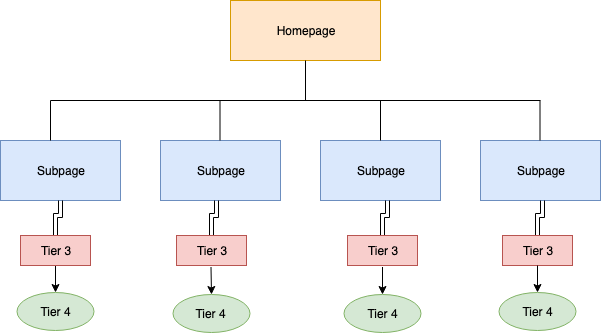How to Integrate Effective SEO Into Your Website Build
Stephen McCance May 8, 2019

Are you looking to start a new business website or just want to build a new website to better suit your current business needs? If so, there is one thing you need to consider from day one of your website: SEO. It’s an unavoidable factor in any modern website. If you don’t consider SEO integration, then it is very likely that your website may not achieve the level of traffic or exposure that you might wish for. Which means that understanding and then integrating this into any new website is vital.
And for that reason, here are some of the most effective ways to ensure that SEO is integrated into your website from day one.
Choose a Good Domain
Your domain name is the first thing that both Google and users see, it’s a simple but undeniable fact. The better your domain name and structure, the easier you will find ranking the website. A domain needs to be relevant to your business/blog, should be easy to remember and should actually include a keyword which you want to rank for.
However, it is important to also not force this. For example, if your business is called Rob’s Pizza then getting the domain name “take-away-pizza-your-location.com” will work for search engines, but it’s probably best to have your domain as “robs-pizza.com” for people. It has the specific keyword of what you do, i.e. pizza, without being too keyword heavy. And you can always include the metadata later to include the location. This way, people also aren’t confused when your company is called one thing, but your domain is just a keyword.
Ultimately, it shouldn’t be hard finding the right domain. But it may be difficult to actually juggle what you want to call the website vs. the SEO benefits of doing so. If you can integrate keywords without forcing it too heavy-handedly, then that’s always the best option.
Plan Your Site Architecture
Site architecture is so, so, important. And yet so many people either overlook or ignore it completely when it comes to SEO integration value. The way your website is ordered and designed can have a big impact in terms of both usability and Google rankings. How? Well, site hierarchy and order can communicate on a deeper level.
For example, your homepage is naturally at the top of your site hierarchy. This is the most important page. Then it would be the main topics of your blog, your services or whatever else might be next important on your website. After those two tiers, whatever comes off of the second tier and expands further down becomes ever less important.

Here you can see the tiered site hierarchy, which is how many websites are designed and work. This is fine so long as you aren’t trying to rank the tier 3 or tier 4 pages, as their position demotes them in the eyes of both users and Google’s search algorithm. The lower down your page in the site hierarchy, the harder it will be for you to rank it.
This is why a flat site hierarchy is the most ideal for SEO. This simply means that a website is navigational in 3 clicks. So, homepage, subpage and then a lower subpage if necessary. But, these tiers are mainly for the user and so you may never want to actively rank them. The flat site model should help adhere to the 3-click rule.
As demonstrated in the diagram below:

In this instance, a number of tier 3 and 4 pages have been transformed into subpages leading directly off of the homepage. Increasing their importance in the eyes of Google. The remaining tier 3 pages, then, also comply with the 3-click rule and make the site more user-friendly.
Of course, when you’re starting a site from scratch with only a few pages it may not seem very important. But, that doesn’t mean that this will always be the case. Keep this in mind as your site grows as it could affect your rankings one day.
Perform Keyword Research
Keyword research is obviously very important for SEO. It’s often the first thing that people mention when not taking technical SEO into account. For example, if your business website is involved in custom bracelets then you need to do keyword research surrounding this subject. You can get some good results such as:
| Keyword | Volume | Competition |
| Custom Bracelets | 880 | High |
| Engraved Silver Bracelets | 480 | High |
| Personalised Leather Bracelets | 480 | High |
| Custom Charm Bracelets | 70 | High |
| Personalised Bracelets | 8,100 | High |
| Engraved Bracelets | 3,600 | High |
| Engraved Gold Bangle | 90 | High |
| Engraved Infinity Bracelets | 170 | High |
The keywords here are just a quick example. But, you can see clearly that you would have a number of different pages utilising these keywords. “Leather Bracelets”, “Silver Bracelets”, “Gold Bangles” and the like can all be specific pages which you then optimise with the above keywords. And these can drop down off of category pages such as “Engraved Bracelets” and “Custom Charm Bracelets”.
Your keywords should help inform your site structure and the pages you add to it. SEO integration is better baked into your website from the very beginning, rather than added as pretty decoration afterwards. As the deeper into your website it is placed, the more effective it will be.
Optimise EVERYTHING
And finally, once the bare bones of your website are in place there is only one thing left to do: optimise everything. Once you have your keyword then it needs to be integrated into the relevant page before it ever goes live. The optimisation hierarchy flows as follows:
- Meta Title and Description
- URL
- H1
- H2
- Page Content (several times)
- Image Alt Text
The page should offer unique information about the keyword subject, as the better the page content the better it should rank. But, optimising it doesn’t hurt and only improves your chances of ranking well for a specific term.
SEO integration in your website build can be very simple, but it can also lead those with little experience to fall victim to keyword stuffing. Yes, you want your keywords to be present in all of the above elements. But, you do not want to engorge the number of keywords to a point where it becomes spammy or makes your content hard to read. Try to limit yourself to a keyword density of less than 5%, as this tends to help your content fall below the keyword-stuffed territory.
Final Thoughts…
Overall, integrating SEO into your site at every stage is vital and should be done from the beginning. If SEO integration is part of your site design, rather than something you only remembered to add at the end, it is so much more valuable. And for that reason, you can definitely find it to be one of the best commodities and biggest drivers of revenue for your site.
